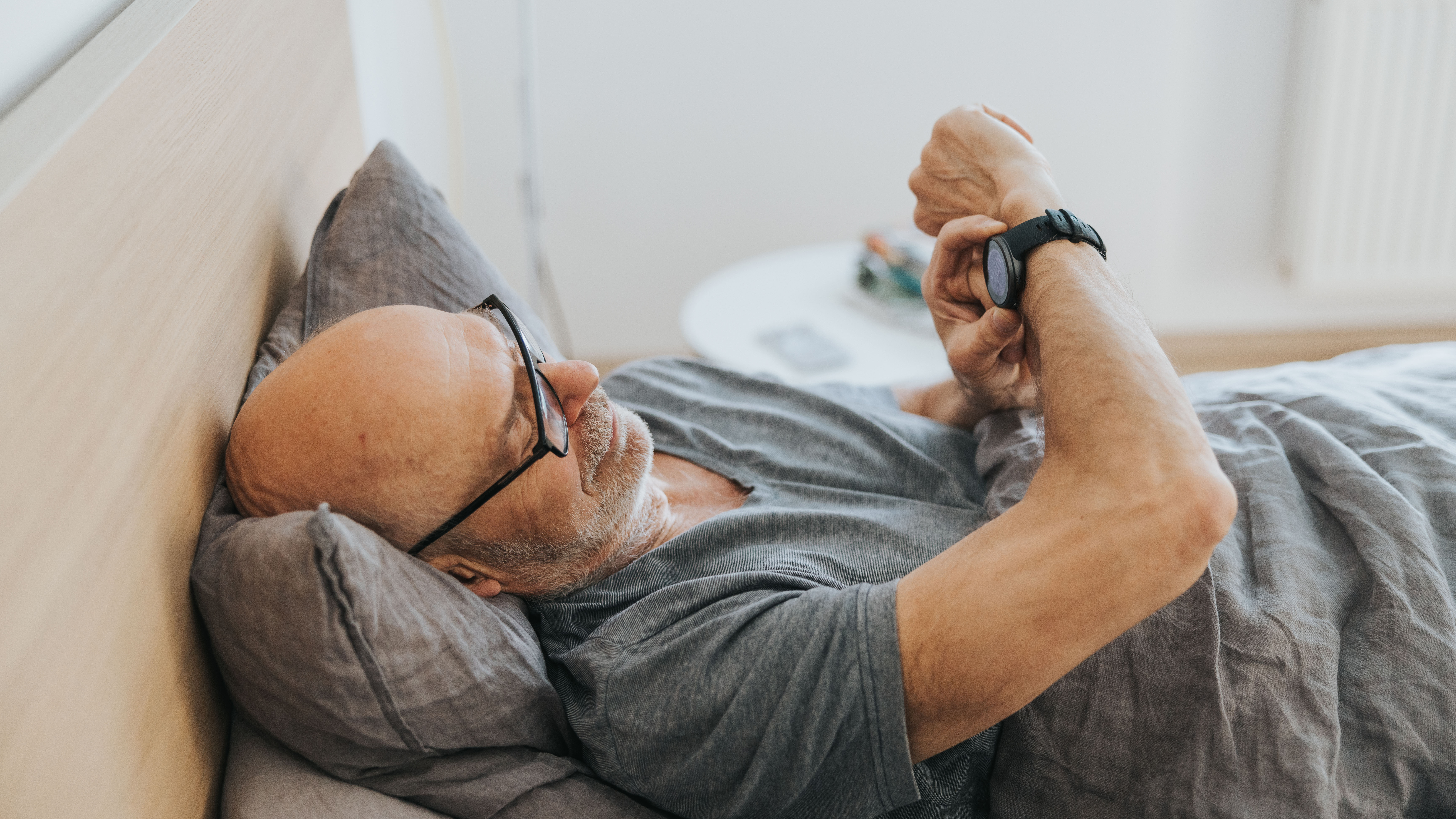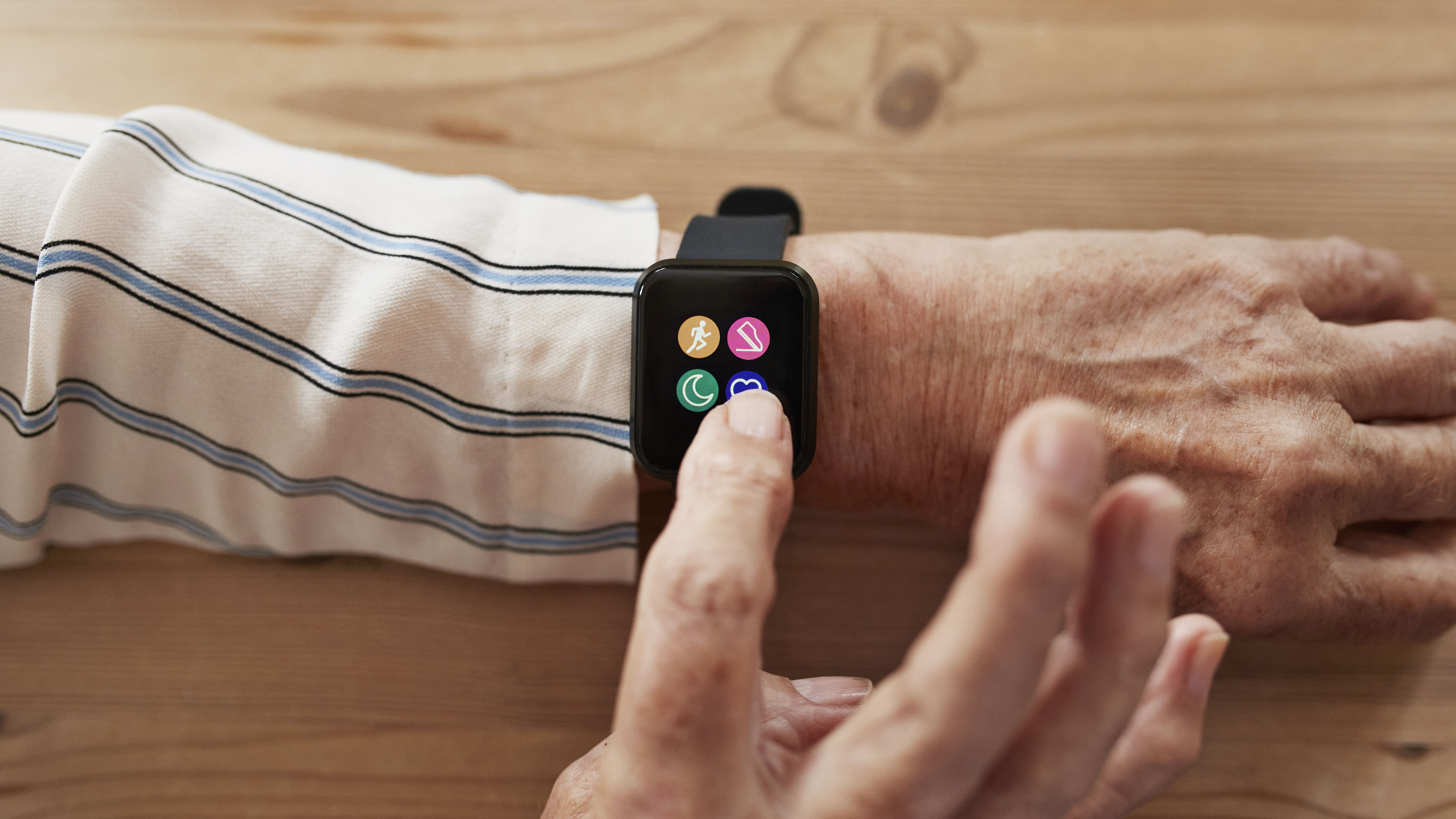How fitness trackers monitor your sleep
These smart, stylish devices provide an impressive array of data; here’s how fitness trackers monitor your sleep

Ever wondered how fitness trackers monitor your sleep? The best fitness trackers can now deliver a wealth of health data, keeping tabs on everything from blood oxygen levels to atrial fibrillation – but how do they monitor your naps? And just how accurate are fitness trackers at recording your sleep?
We combed through the latest data and chatted with Justin Roethlingshoefer, the founder of OWN IT – a digital platform that helps coaches interpret fitness tracker data – to find out. Find out what is the best place to wear a fitness tracker (other than your bed!)
How does your fitness tracker monitor your sleep?
Fitness trackers usually have inbuilt accelerometers and gyroscopes, which allow them to track and monitor your movement. By analyzing your movement data throughout the day, sensors can make an estimate of when you're active and when you're inactive (asleep.) This process is known as actigraphy, which Roethlingshoefer describes as a “non-invasive technique used to assess cycles of activity and rest.”
This isn’t the only way that trackers monitor sleep, though. Some devices combine acitgraphy with photoplethysmography (PPG) to get a more accurate picture.
PPG involves using a light source and a photodetector, explains Roethslingshoefer. “The light source emits light to a tissue [such as those found in your wrist] and the photodetector measures the reflected light from the tissue.”

Because blood absorbs and reflects different wavelengths of light, the photodetector can take certain measurements from these reflections. It can use the reflected light to measure things like blood volume and oxygen saturation – but it can also estimate things like heart rate and heart rate variability, by analyzing how much blood is passing through the illuminated spot per second. This data can in turn be used to make observations about a person’s sleep, as people's heart rates tend to slow and oxygen levels dip at various stages of sleep.
How will you know if your tracker uses PPG? Look for a couple of little LEDs on the back of the device.
Get the world’s most fascinating discoveries delivered straight to your inbox.
“Most common PPG sensors use an infrared light emitting diode (IR-LED) or a green LED as the main light source,” says Roethslinghoefer. “IR-LEDs are most commonly used for measuring the flow of blood that is more deeply concentrated in certain parts of body such as the muscles, whereas green light is typically used for calculating the absorption of oxygen in oxyhemoglobin – oxygenated blood – and deoxyhemoglobin – blood without oxygen present.”
How accurate is sleep tracking with a fitness tracker?
Unfortunately, Roethslinghoefer says that sleep tracking isn’t that accurate, especially when it comes to actigraphy. Although actigraphy can be used to guess sleep duration, it’s not very good at detecting different sleep stages – and it can even think that you've fallen asleep when in reality you're just not moving very much.
Even taking in account modern developments like PPG, Roethslinghoefer estimates that the accuracy of sleep tracking is at about 60%. But he also points to some recent studies that show promising improvements.

In a 2019 study published in the Journal of Medical Internet Research it was shown that Fitbit, one of the world’s most popular wearable brands, offers impressive accuracy given the entry-level cost of sleep tracking, but still pales in comparison to Polysomnography (PSG) which remains the gold standard of sleep tracking.
And in a 2020 study at the University of Arizona there were some promising results for the Whoop 4.0 tracker. The study showed the band predicted sleep duration within a precision of 17.8 minutes and also had a highly accurate detection of REM and Slow Wave (deep) sleep.
In summary, you’ll get more accurate sleep staging data from spending time in a sleep study that uses the PSG method, but your fitness tracker will be able to track the length of sleep in a much more convenient way.
Why track your sleep with a fitness tracker?
Tracking sleep may sound alien, but it essentially provides more data for you to use to improve your physical and mental wellbeing.
For example, a raised temperature at night could be a sign of an oncoming illness. Some fitness trackers even let you monitor the different stages of sleep, which are:
N1 sleep: The initial sleep stage, where your body is starting to relax and you may experience twitches. It usually lasts up to five minutes.
N2 sleep: At this point, your heart rate will drop, and you’ll start to breathe more slowly. This stage can last up to 25 minutes.
Slow-Wave sleep (SWS): This stage is defined by delta waves in the brain, and it’s important for growth and recovery. This stage can last up to 40 minutes in early sleep cycles, and will gradually get shorter as we spend more time in REM.
Rapid Eye Movement (REM) sleep: During REM, your body slips into atonia, a temporary paralysis while your eyes move quickly despite being closed. Your brain is most active in REM sleep, almost as much as it is when you’re awake. REM time grows with every sleep cycle and can last around an hour.
Lloyd Coombes freelance tech and fitness writer for Live Science. He's an expert in all things Apple as well as in computer and gaming tech, with previous works published on TechRadar, Tom's Guide, Live Science and more. You'll find him regularly testing the latest MacBook or iPhone, but he spends most of his time writing about video games as Gaming Editor for the Daily Star. He also covers board games and virtual reality, just to round out the nerdy pursuits.



